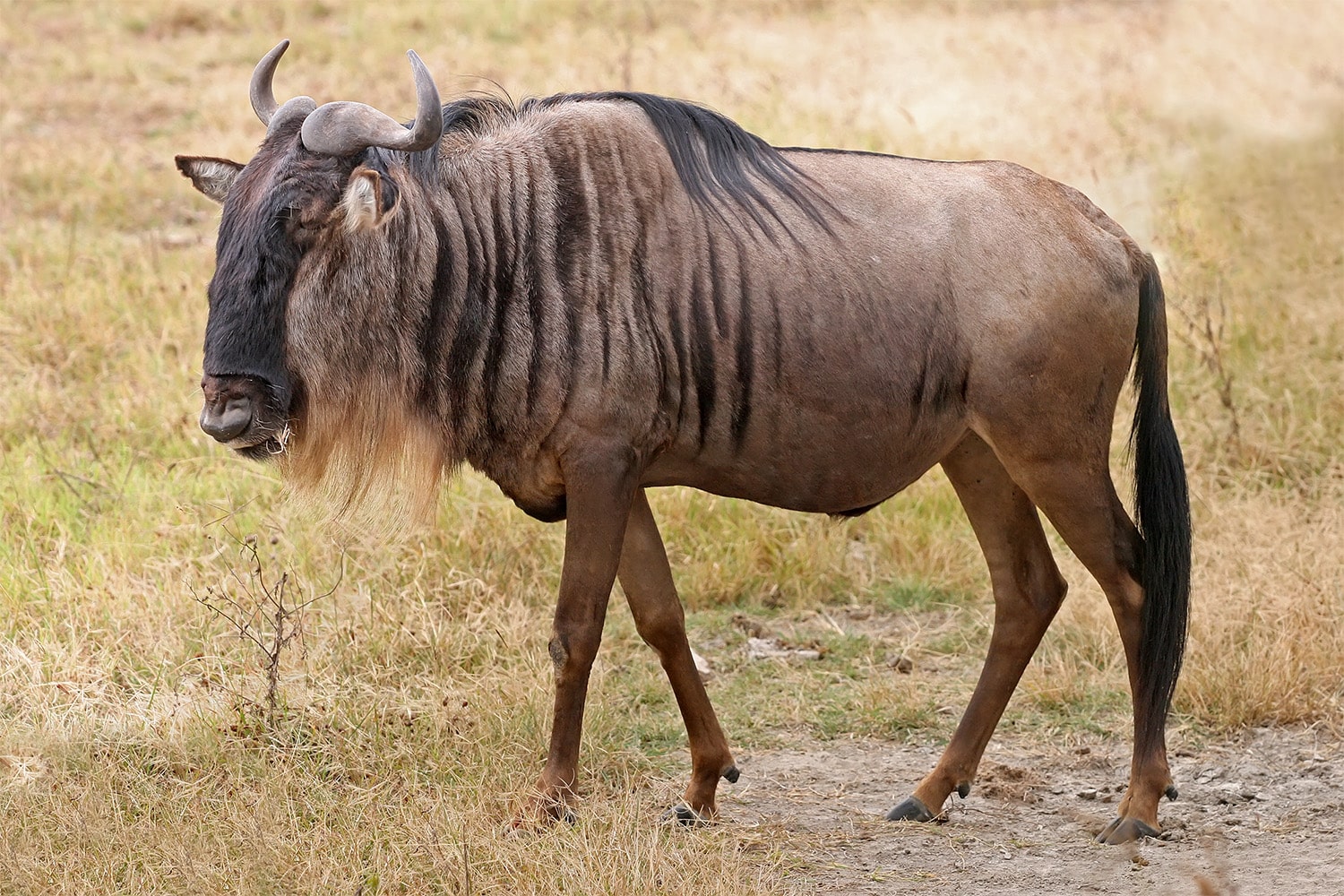
30 interesting facts about wildebeests
- 👁️ 340
Wildebeests, also known as gnus, are intriguing and vital components of the African savannah ecosystem. These large, antelope-like animals are renowned for their massive, coordinated migrations, a spectacle considered one of the most breathtaking natural events on the planet. With their distinct appearance and fascinating social behavior, wildebeests play a crucial role in maintaining the health and balance of their habitats. They are not just prey animals but key participants in the savannah’s complex ecological web, affecting the distribution of predators and the condition of grasslands. Here are 30 interesting and informative facts about wildebeests that highlight their importance and uniqueness.
- Wildebeests belong to the bovidae family, which includes antelopes, cattle, goats, sheep, and other even-toed horned ungulates.
- There are two species of wildebeests: the black wildebeest or white-tailed gnu, and the blue wildebeest or brindled gnu.
- The blue wildebeest is known for its silvery-blue coat, while the black wildebeest has a darker brown to black coat.
- Wildebeests can live up to 20 years in the wild.
- They are native to the grasslands and open woodlands of central, southern, and eastern Africa.
- The Great Migration involves over 1.5 million blue wildebeests, along with hundreds of thousands of zebras and gazelles, traveling across the Serengeti in Tanzania and the Maasai Mara in Kenya.
- This migration is a circular journey that spans approximately 1,800 miles and is driven by the seasonal rainfall patterns in these regions.
- Wildebeests are known for their strong herd instincts, with herds sometimes numbering in the thousands.
- They are primarily grazers, feeding on short grasses, which makes their migration essential for finding fresh grazing lands.
- Predators such as lions, hyenas, and crocodiles prey on wildebeests, especially during their migration.
- Wildebeests give birth in a synchronized birthing period, where hundreds of thousands of calves are born within a span of two to three weeks.
- Calves can stand and run shortly after birth, an adaptation that helps them evade predators.
- The black wildebeest was once near extinction, with numbers dropping to a few hundred in the early 20th century, but conservation efforts have helped its population recover.
- Wildebeests have a unique social structure, forming nursery herds, bachelor herds, and mixed-sex herds.
- Their migrations help fertilize the savannah; their dung and urine enrich the soil, promoting new plant growth.
- Wildebeests have long tails, similar to those of horses, which they use to swat away flies and insects.
- They can run at speeds of up to 80 km/h (50 mph) to escape predators.
- Wildebeests communicate using moans, grunts, and explosive snorts.
- The term “wildebeest” comes from the Dutch words “wild” and “beest,” which mean wild beast.
- Crocodile-infested rivers pose significant hazards during migration, resulting in many wildebeests drowning or being killed by crocodiles.
- Despite the risks, wildebeests’ migratory behavior ensures that the healthiest and fittest individuals survive, contributing to the strength of the population.
- Their hooves are specially adapted for long-distance travel over rough terrains.
- Wildebeests play a crucial role in the diet of nomadic tribes in Africa, providing meat, hides, and other resources.
- During the dry season, wildebeests can smell rain from miles away, guiding them towards fresh water and grazing lands.
- The wildebeest’s main threat is habitat loss due to agricultural expansion and human settlement.
- They have a distinct, box-shaped muzzle, which is efficient for grazing on short grasses.
- Wildebeests have prehensile lips that help them select the most nutritious parts of the grass.
- Research suggests that the patterns of their migrations are also influenced by the moon’s phases.
- The horns of wildebeests are curved and resemble those of other antelopes but are thicker and more robust.
- Their migrations are a critical part of the Serengeti’s ecosystem, supporting a large number of predators and scavengers.
Wildebeests are much more than just a feature of the African landscape; they are essential players in maintaining the biodiversity and ecological balance of their habitats. Their epic migrations are not only a symbol of the wild’s untamed beauty but also a reminder of the intricate connections within ecosystems. Protecting wildebeests and their migration routes is crucial for conserving Africa’s rich wildlife heritage and ensuring the health of the savannah ecosystem for future generations.
Wildebeests, also known as gnus, are intriguing and vital components of the African savannah ecosystem. These large, antelope-like animals are renowned for their massive, coordinated migrations, a spectacle considered one of the most breathtaking natural events on the planet. With their distinct appearance and fascinating social behavior, wildebeests play a…